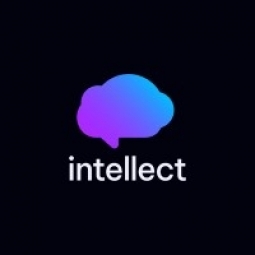Customer Company Size
Mid-size Company
Region
- America
Country
- United States
Product
- Intellect platform
Tech Stack
- Business Process Management Software
Implementation Scale
- Enterprise-wide Deployment
Impact Metrics
- Productivity Improvements
- Customer Satisfaction
Technology Category
- Platform as a Service (PaaS) - Application Development Platforms
Applicable Industries
- Retail
Applicable Functions
- Logistics & Transportation
Use Cases
- Inventory Management
Services
- Software Design & Engineering Services
- System Integration
About The Customer
Founded over 25 years ago, Edwards Technology, Inc. (ETI) designs audio visual entertainment technology for retail stores, theme parks, corporate headquarters, museums, libraries, casinos, restaurants and entertainment venues worldwide. Edwards Technologies is enhancing customer experience everyday for big clients including Disney Retail Stores, Universal Studios, Legoland, Kansas City Royals Hall of Fame, Volkswagen Autostadt, National Infantry Museum, and the International Spy Museum.
The Challenge
Edwards Technologies was dealing with rapid growth, having recently acquiring very large projects with high visibility. Their challenges included ensuring that products ordered were delivered on time, project issues were addressed effectively and projects completed on deadline. Managing their day to day operational and workflow processes as well as retrieving pertinent information all in one centralized location became a major undertaking. The manual process of storing documents in various folders on their network server, tracking and managing their project statuses via Excel and other programs were no longer effective, while visibility into projects and overall accountability was slipping. Another challenge was the communication barriers between internal departments. Each department was spending a lot of time conveying real time progress and identifying bottlenecks.
The Solution
ETI wanted a solution that was flexible, met their special process requirements and fit within their budget. After careful consideration, they realized that with the Intellect platform, one solution could address all of their unique process needs in one environment. Intellect helped launch successfully Edwards Technologies project, order tracking and issue management processes. The successful deployment of the platform has increased their efficiencies and productivity tenfold. In addition, communication between the departments has improved considerably, with dashboards and intelligence enabling them to attain data on work trends and patterns.
Operational Impact
Quantitative Benefit

Case Study missing?
Start adding your own!
Register with your work email and create a new case study profile for your business.
Related Case Studies.

Case Study
Improving Production Line Efficiency with Ethernet Micro RTU Controller
Moxa was asked to provide a connectivity solution for one of the world's leading cosmetics companies. This multinational corporation, with retail presence in 130 countries, 23 global braches, and over 66,000 employees, sought to improve the efficiency of their production process by migrating from manual monitoring to an automatic productivity monitoring system. The production line was being monitored by ABB Real-TPI, a factory information system that offers data collection and analysis to improve plant efficiency. Due to software limitations, the customer needed an OPC server and a corresponding I/O solution to collect data from additional sensor devices for the Real-TPI system. The goal is to enable the factory information system to more thoroughly collect data from every corner of the production line. This will improve its ability to measure Overall Equipment Effectiveness (OEE) and translate into increased production efficiencies. System Requirements • Instant status updates while still consuming minimal bandwidth to relieve strain on limited factory networks • Interoperable with ABB Real-TPI • Small form factor appropriate for deployment where space is scarce • Remote software management and configuration to simplify operations

Case Study
Digital Retail Security Solutions
Sennco wanted to help its retail customers increase sales and profits by developing an innovative alarm system as opposed to conventional connected alarms that are permanently tethered to display products. These traditional security systems were cumbersome and intrusive to the customer shopping experience. Additionally, they provided no useful data or analytics.

Case Study
How Sirqul’s IoT Platform is Crafting Carrefour’s New In-Store Experiences
Carrefour Taiwan’s goal is to be completely digital by end of 2018. Out-dated manual methods for analysis and assumptions limited Carrefour’s ability to change the customer experience and were void of real-time decision-making capabilities. Rather than relying solely on sales data, assumptions, and disparate systems, Carrefour Taiwan’s CEO led an initiative to find a connected IoT solution that could give the team the ability to make real-time changes and more informed decisions. Prior to implementing, Carrefour struggled to address their conversion rates and did not have the proper insights into the customer decision-making process nor how to make an immediate impact without losing customer confidence.

Case Study
Ensures Cold Milk in Your Supermarket
As of 2014, AK-Centralen has over 1,500 Danish supermarkets equipped, and utilizes 16 operators, and is open 24 hours a day, 365 days a year. AK-Centralen needed the ability to monitor the cooling alarms from around the country, 24 hours a day, 365 days a year. Each and every time the door to a milk cooler or a freezer does not close properly, an alarm goes off on a computer screen in a control building in southwestern Odense. This type of alarm will go off approximately 140,000 times per year, equating to roughly 400 alarms in a 24-hour period. Should an alarm go off, then there is only a limited amount of time to act before dairy products or frozen pizza must be disposed of, and this type of waste can quickly start to cost a supermarket a great deal of money.

Case Study
Supermarket Energy Savings
The client had previously deployed a one-meter-per-store monitoring program. Given the manner in which energy consumption changes with external temperature, hour of the day, day of week and month of year, a single meter solution lacked the ability to detect the difference between a true problem and a changing store environment. Most importantly, a single meter solution could never identify root cause of energy consumption changes. This approach never reduced the number of truck-rolls or man-hours required to find and resolve issues.








